Legend Of Baku – The Dream Eater – Was It An Ancient Supernatural Being?
A. Sutherland - AncientPages.com - In Japanese mythology, we encounter an exciting creature known as Baku, which is well-known for eating bad dreams.
Baku - Mythical Creature Devouring Nightmares - 18th century, Japan. Image credit: The Met
However, there is also a darker side to Baku. According to tradition, people pray to him at night to devour nightmares so they may never be seen again. With Baku's help, the day can then begin in peace.
Some say that Baku eats all dreams, not only nightmares. It includes visions of aspiration, dreams of your future, and dreams of hope. Images of Baku or stuffed Baku toys (he's cute!) are placed in children's bedrooms or for anyone suffering chronic nightmares. His name painted on headboards or set in the bedroom may be sufficient to promote peaceful, secure, uninterrupted sleep.
When a child in Japan wakes to shake from a nightmare, she knows what to do. Hugging her face in her pillow, she whispers three times, "Baku-san, come eat my dream. Baku-san, come eat my dream. Baku-san, come eat my dream.” If her request is granted, the monstrous Baku will come into her room and suck the bad dream away."
There have been various ways of summoning this yokai.
In Fukushima, it is said that if, after waking from a bad dream, you say, "I give this dream to the Baku," then that dream will never trouble you again.
Bronze statue of "Baku" installed on Mizuki Shigeru Road. Image credit: Keihin Nike - CC BY-SA 3.0
In other prefectures, you repeat, "Baku-san, come eat my dream" three times to summon Baku and eat your nightmares.
In his book "Ancient Chinese Gods and Beasts," Kyoto University professor Hayashi Minao points to ancient bronze ware and other artifacts inscribed with images of the mythical Baku.
Still, one must remember that a Baku cannot and should only be summoned cautiously.
It is believed that a Baku that is hungry might not be satisfied with a single dream and might suck away her hopes and ambitions along with it, leaving her hollow.
An early 17th-century Japanese manuscript, the Sankai Ibutsu, depicts Baku as a Chinese mythical chimera with an elephant's trunk, rhinoceros eyes, an oxtail, and tiger paws, which in belief protected against pestilence and evil, although eating nightmares was not included among its abilities.
However, in a 1791 Japanese wood-block illustration, a specifically dream-destroying Baku is depicted with an elephant's head, tusks, and trunk, with horns and tiger's claws. The elephant's head, chest, and tusks are characteristic of Baku portrayed in the classical era (pre-Meiji) Japanese wood-block prints, inshrine, temple, and netsuke carvings.
While wildly stylized, Baku resembles the Asian tapir that once existed in China but has since gone extinct. Baku is not alone in this; Kirin (Qilin) is Japanese for a giraffe and a mythical Chinese monster.
Some say a wayward sailor drifted to Malaysia and returned with stories of a massive creature transformed by legend. Which came the first, the myth or the animal is hidden in the past. Many say that the two are unconnected and that the similar appearance is pure coincidence, with the animal named after the legend.
Baku is often confused with another legendary Chinese animal, the Hakutaku (called a bai ze in Chinese), a wise, fabulous beast that resembles a white ox, but not exactly.
The Hakutaku has nine eyes, three on the head and three on each side below his six horns. Hakutaku is a symbol of good omen and good luck - live in remote mountains. It only appears in countries where the land's ruler is a wise and virtuous leader. This intelligent creature speaks human languages and knows much about everything in creation.
In fact, at Gobyakukan-ji temple in Tokyo, there is a statue called the Baku King, originally a statue of a Hakutaku.
Carvings of Baku decorate temples in Japan. It remains unclear whether the Baku existed in ancient times or if the creature is purely mythological, but the beast is still very much alive in the minds of modern people.
A provocative thought is that Baku once possessed supernatural powers and could affect peoples' thoughts, dreams, and consciousness.
Written by – A. Sutherland - AncientPages.com Senior Staff Writer
Updated on December 31, 2023
Copyright © AncientPages.com All rights reserved. This material may not be published, broadcast, rewritten or redistributed in whole or part without the express written permission of AncientPages.com
Expand for referencesReferences:
More From Ancient Pages
-
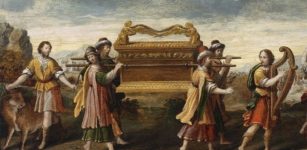 Archaeologists Will Soon Excavate Biblical Site Where Ark Of The Covenant Once Stood
Archaeology | Feb 23, 2017
Archaeologists Will Soon Excavate Biblical Site Where Ark Of The Covenant Once Stood
Archaeology | Feb 23, 2017 -
 Early Māori Settlement On The Subantarctic Islands -Uncovering Some Of The Unknown
Archaeology | Jul 20, 2023
Early Māori Settlement On The Subantarctic Islands -Uncovering Some Of The Unknown
Archaeology | Jul 20, 2023 -
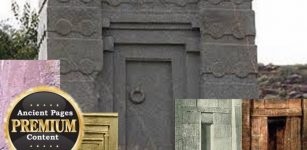 Unraveling The Mystery Of Ancient ‘False Doorways’
Featured Stories | May 24, 2014
Unraveling The Mystery Of Ancient ‘False Doorways’
Featured Stories | May 24, 2014 -
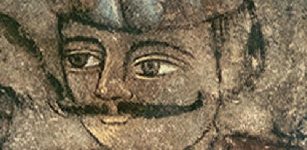 On This Day In History: Vlad II Known As Vlad Dracul (‘Vlad The Dragon’) Was Born – On August 30, 1400
News | Aug 30, 2016
On This Day In History: Vlad II Known As Vlad Dracul (‘Vlad The Dragon’) Was Born – On August 30, 1400
News | Aug 30, 2016 -
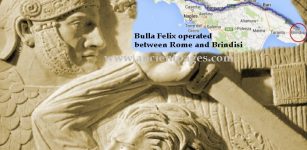 Bulla Felix: Legendary Italian Leader Of Outlaws Who Robbed The Rich And Gave To The Poor
Featured Stories | Mar 23, 2023
Bulla Felix: Legendary Italian Leader Of Outlaws Who Robbed The Rich And Gave To The Poor
Featured Stories | Mar 23, 2023 -
 Rare 500-Year-Old Wreck From Missing Ship Samson Discovered In Central Stockholm, Sweden
Archaeology | Dec 20, 2019
Rare 500-Year-Old Wreck From Missing Ship Samson Discovered In Central Stockholm, Sweden
Archaeology | Dec 20, 2019 -
 Scientists Say Dinosaurs Could Be The Reason Humans Can’t Live For 200 Years
Featured Stories | Jan 8, 2024
Scientists Say Dinosaurs Could Be The Reason Humans Can’t Live For 200 Years
Featured Stories | Jan 8, 2024 -
 Weapons Of Ancient Aztec Warriors Of Mesoamerica
Featured Stories | Mar 23, 2017
Weapons Of Ancient Aztec Warriors Of Mesoamerica
Featured Stories | Mar 23, 2017 -
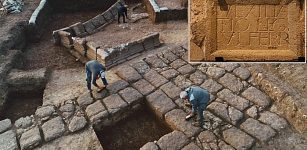 1,800-Year-Old Legio VI Ferrata Military Camp Uncovered In Israel
Archaeology | Feb 21, 2024
1,800-Year-Old Legio VI Ferrata Military Camp Uncovered In Israel
Archaeology | Feb 21, 2024 -
 Ancient Knowledge About Horse Taming Is Rewriting Our Picture Of The Past
Archaeology | Jan 27, 2022
Ancient Knowledge About Horse Taming Is Rewriting Our Picture Of The Past
Archaeology | Jan 27, 2022 -
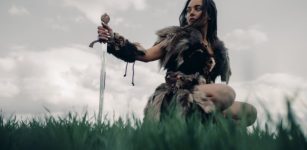 Archaeological Evidence Amazon Warrior Women Did Exist Found At Nakhchivan Necropolis, Azerbaijan
Archaeology | Mar 27, 2024
Archaeological Evidence Amazon Warrior Women Did Exist Found At Nakhchivan Necropolis, Azerbaijan
Archaeology | Mar 27, 2024 -
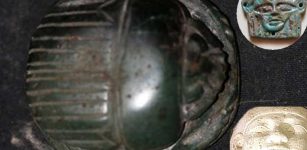 Amulets, Figurines Discovered In Recently Unearthed Limestone Sarcophagus In Minya, Egypt
Archaeology | Oct 15, 2020
Amulets, Figurines Discovered In Recently Unearthed Limestone Sarcophagus In Minya, Egypt
Archaeology | Oct 15, 2020 -
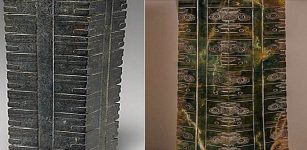 Mysterious Jade Cong – Perplexing Ancient Chinese Artifact
Featured Stories | Jan 3, 2023
Mysterious Jade Cong – Perplexing Ancient Chinese Artifact
Featured Stories | Jan 3, 2023 -
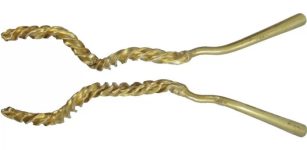 3,000-Year-Old Twisted Gold Torc Discovered In Essex
Archaeology | Jul 15, 2023
3,000-Year-Old Twisted Gold Torc Discovered In Essex
Archaeology | Jul 15, 2023 -
 Entrance To An Unexplored Ice Age Cave Discovered Near Engen!
Archaeology | Aug 4, 2023
Entrance To An Unexplored Ice Age Cave Discovered Near Engen!
Archaeology | Aug 4, 2023 -
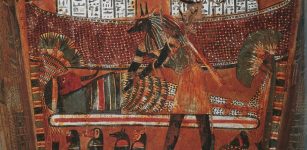 Immortal God Anubis: Lord Of The Sacred Land, Jackal God Of Mummification
Egyptian Mythology | Sep 19, 2016
Immortal God Anubis: Lord Of The Sacred Land, Jackal God Of Mummification
Egyptian Mythology | Sep 19, 2016 -
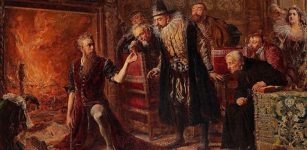 On This Day In History: England’s Act Against Multipliers Signed Into Law – On Jan 13, 1404
News | Jan 13, 2017
On This Day In History: England’s Act Against Multipliers Signed Into Law – On Jan 13, 1404
News | Jan 13, 2017 -
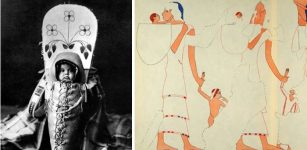 Baby Carriers Were Used 10,000 Years Ago – New Evidence
Archaeology | Sep 27, 2022
Baby Carriers Were Used 10,000 Years Ago – New Evidence
Archaeology | Sep 27, 2022 -
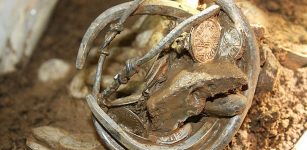 Watlington Viking Hoard May Re-Write History Of England
Archaeology | Dec 11, 2015
Watlington Viking Hoard May Re-Write History Of England
Archaeology | Dec 11, 2015 -
 Is The Legendary Tsuchinoko Real?
Featured Stories | Aug 21, 2019
Is The Legendary Tsuchinoko Real?
Featured Stories | Aug 21, 2019



